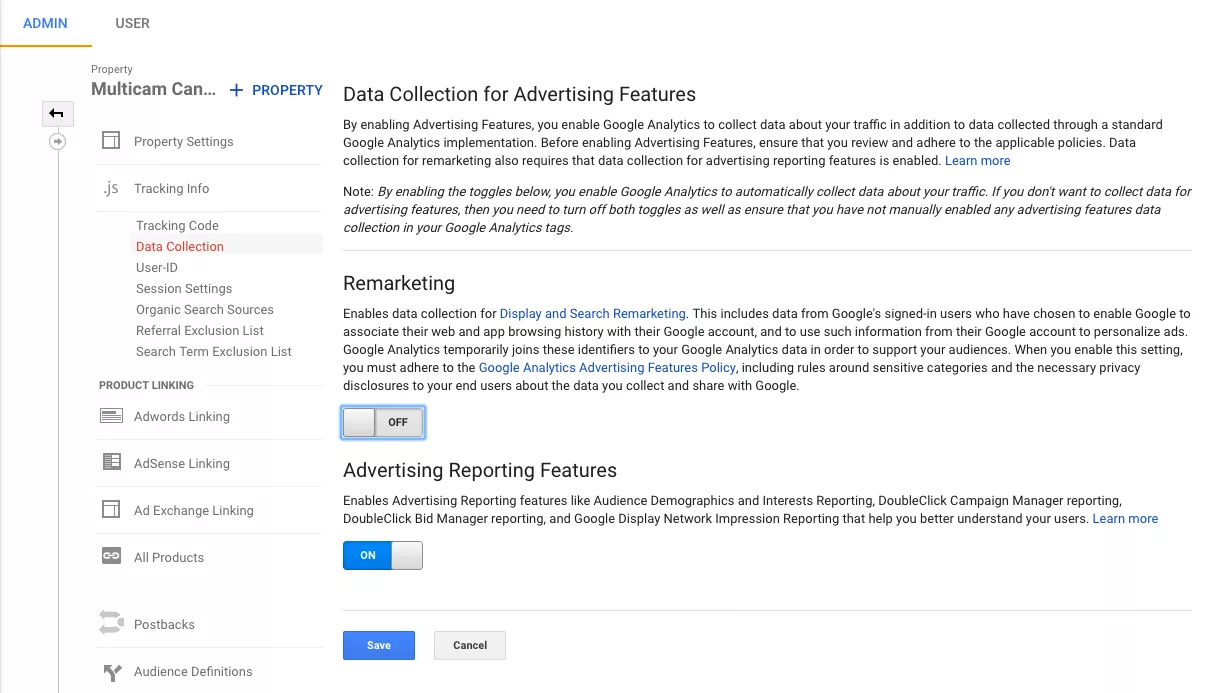Reliable Approaches for Remarketing in Google Analytics
In the world of digital marketing, the realm of remarketing in Google Analytics stands as a pivotal device for businesses aiming to boost their on-line visibility and conversion prices. With strategic audience division, tailored remarketing listings, and appealing ad creatives, companies can craft personalized projects that reverberate with their target audience. The real success exists in the ability to constantly fine-tune and maximize these techniques based on performance metrics and data understandings. By exploring the subtleties of vibrant remarketing and leveraging sophisticated monitoring devices, services can open the complete possibility of their remarketing efforts, resulting in boosted brand name presence and consumer involvement.
Audience Division
Using target market division is an essential strategy in optimizing the efficiency of remarketing campaigns within Google Analytics. By splitting your audience into unique teams based on their behavior, demographics, or rate of interests, you can customize your advertising and marketing messages to be a lot more interesting and appropriate. This strategy permits you to provide personalized ads to certain sectors, enhancing the likelihood of conversion.

Furthermore, target market segmentation assists you comprehend the differing demands and choices of different customer groups, enabling you to craft more compelling advertisement creatives and offers. This targeted technique not just improves the effectiveness of your remarketing initiatives yet additionally improves overall project efficiency.
Setting Up Remarketing Checklists
To successfully carry out remarketing strategies in Google Analytics, the first action includes creating targeted remarketing checklists based on specific audience communications. Establishing up remarketing checklists enables online marketers to section their internet site site visitors into different groups based on their behavior, such as pages watched, products looked for, or activities handled the website. By defining these sections, marketers can after that produce individualized and appropriate advertisements that target these details groups, increasing the probability of conversion.
Remarketing lists can be established up making use of numerous requirements such as web page brows through, duration of see, details objective conclusions, or perhaps specific occasions set off on the website. This level of customization allows online marketers to tailor their promotions to match the rate of interests and choices of each segmented audience, resulting in higher involvement and conversion rates.
Additionally, remarketing lists can also be produced based on data imported from various other resources like CRM systems, enabling for a lot more specific targeting. By establishing up these targeted remarketing lists, marketers can properly get to out to prospective consumers who have actually currently shown rate of interest in their product and services, making best use of the impact of their remarketing campaigns.
Creating Engaging Ad Creatives
After segmenting internet site visitors into targeted remarketing checklists based upon particular audience interactions, the next crucial action is to craft engaging advertisement creatives that resonate with each segmented group's passions and preferences. The performance of remarketing projects heavily counts on the ability of these advertisement creatives to record the attention of the target market and drive them to take the wanted action.
To produce engaging ad creatives, it is vital to recognize the distinct attributes of each fractional team (What Is “Remarketing” In Google Analytics?). Customizing the messaging, visuals, and uses to align with the interests and preferences of the target market can dramatically increase the possibilities of conversion. hop over to these guys Utilizing vibrant ads that instantly adjust content based upon the user's behavior can also improve the personalization of the ad experience

Tracking Performance and Optimization
Effective monitoring of campaign performance and regular optimization are vital facets of effective remarketing techniques in Google Analytics. To make certain the efficiency of remarketing projects, marketing experts should on a regular basis track key efficiency metrics such as click-through prices, conversion prices, and return on ad invest. By checking these metrics, marketers can obtain useful understandings into the efficiency of their projects and determine locations for enhancement.
In Google Analytics, marketing experts can utilize devices like conversion tracking and audience segmentation to evaluate the performance of their remarketing projects. Conversion tracking permits marketing professionals to track particular actions that customers take after clicking on a remarketing ad, offering valuable information on the effectiveness of the project in driving wanted outcomes. Audience segmentation, on the various other hand, enables marketers to divide their target market right into various sectors based upon different standards such as demographics, behavior, and rate of interests, enabling for more targeted and personalized remarketing initiatives.
Continual optimization is essential for making best use of the impact best site of remarketing projects. Online marketers should make use of A/B testing to trying out various advertisement creatives, messaging, and targeting strategies to identify one of the most reliable methods. By regularly assessing project performance data and making data-driven optimizations, marketing experts can ensure that their remarketing projects are attaining the wanted results and driving conversions effectively.
Leveraging Dynamic Remarketing
Utilizing dynamic remarketing can dramatically improve the importance and impact of targeted ads in Google Analytics. This sophisticated method enables advertisers to reveal customized ads to individuals who have actually formerly visited their website or utilized their mobile app. By dynamically displaying products or services that the customers have actually revealed rate of interest in, dynamic remarketing aids to maintain the brand name fresh in their minds and motivates them to go back to finish an acquisition.

Moreover, vibrant remarketing projects can be automated and optimized in real-time based on performance information, making sure that the ads remain efficient and pertinent. By leveraging dynamic remarketing in Google Analytics, advertisers can develop more impactful and targeted advertising projects that resonate with their target market and drive results.
Conclusion
Finally, efficient remarketing strategies in Google Analytics involve audience segmentation, targeted remarketing lists, engaging advertisement creatives, efficiency surveillance, and dynamic remarketing. By focusing on customized advertisements, data analysis, and continuous optimization, businesses can increase conversion prices and drive engagement efficiently. Leveraging tools like conversion monitoring ensures that ads continue to be relevant and tailored, causing general success in remarketing efforts.
With tactical audience division, customized remarketing listings, and engaging ad creatives, businesses can craft individualized projects that resonate with their target audience. Making use of vibrant ads that immediately change content based on the individual's habits can likewise improve the customization of the advertisement experience.
Conversion monitoring allows marketing professionals to track particular activities that individuals take after clicking on a remarketing advertisement, giving beneficial information on the effectiveness of the campaign in driving preferred outcomes.Making use of vibrant remarketing can considerably enhance the relevance and impact of targeted advertisements in Google Analytics - What Is “Remarketing” In Google Analytics?.In final thought, reliable remarketing approaches in Google Analytics involve target market segmentation, targeted remarketing checklists, engaging ad creatives, efficiency surveillance, and dynamic remarketing
Comments on “A Full Overview to Remarketing In Google Analytics”